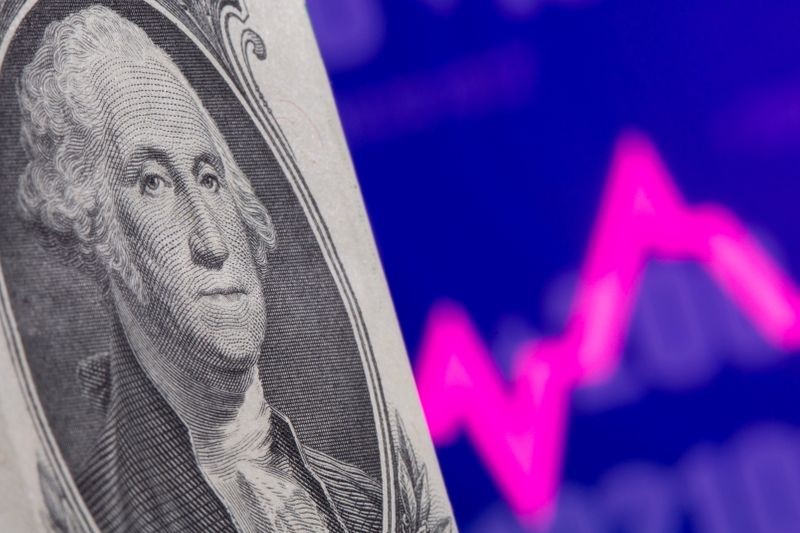Investing.com – The US dollar climbed to new highs on Wednesday as uncertainty over US interest rates and the upcoming presidential election maintained demand for the safe haven.
At 04:10 ET (08:10 GMT), the Dollar Index, which tracks the greenback against a basket of six other currencies, was trading 0.3% higher at 104.175, near its highest in almost three months.
The risks point to a rise in the dollar
The dollar has climbed to the highest level since early August as reasonably healthy economic data dimmed expectations for aggressive rate cuts by the Federal Reserve.
Traders were pricing in an 85.9% chance of a 25 basis point cut in November, and a 14.1% chance of it being unchanged, CME Fedwatch showed.
This change in direction has caused US Treasury yields to rise on expectations of relatively higher yields, with 10-year yields hitting a three-month high this week.
Growing expectations that Republican candidate Donald Trump will win the US presidential election earlier next month have also supported the dollar, given that his protectionist policies would boost the US currency.
“Key market factors continue to support the dollar. We could see some momentum fade today, but the balance of risks remains tilted to the upside in the US election,” ING analysts said in a note.
More ECB cuts are on the way
In Europe, yields fell 0.1% to 1.0785, with the euro weakening amid growing expectations that the European Central Bank could be more aggressive in rate cuts in the future given the uncertain growth outlook.
Rates have already been cut three times this year from record highs, and markets are seeing policy easing at each of the upcoming meetings well into the new year.
The International Monetary Fund said on Tuesday that Germany’s economy, Europe’s largest, would stagnate this year, lowering its forecast from previous growth of 0.2%.
Moreover, inflation in the euro zone is declining and could fall back to 2% sooner than previously thought, ECB President Christine Lagarde said on Tuesday, supporting the case for further interest rate cuts.
fell 0.1% to 1.2969, ahead of a speech by the Bank of England governor later in the day, which could provide more clues to further monetary policy.
Bailey said in an interview earlier this month that the central bank could move more aggressively to cut rates if inflation pressures continue to weaken.
Since then, interest rates in Britain have fallen to 1.7% annually – the first time since April 2021 that rates have fallen below the Bank of England’s 2% target.
“Cable could still rise to 1.28 by the end of the month,” ING said.
The yen is falling ahead of the general election
rose 0.9% to 152.38, climbing above the 152 level for the first time since July 31, with recent opinion polls suggesting the ruling Liberal Democratic Party could lose its majority with coalition partner Komeito in this weekend’s general election to lose.
The risk of a minority coalition government has raised the prospect of political instability, complicating the Bank of Japan’s efforts to reduce reliance on monetary stimulus.
The BOJ will also meet next week, but it is unlikely to raise rates. Consumer inflation from Tokyo is expected next Friday.
rose 0.1% to 7.1265, with focus shifting to an upcoming meeting of China’s National People’s Congress for more clues on budget spending.
rose 0.1% to 1.3824, ahead of the final policy-setting meeting later in this session.
“Markets are today pricing in a 45 basis point easing from the Bank of Canada. The reasoning is that inflation has now fallen below target and that the soft growth picture justifies a faster move of 50 basis points to a neutral interest rate,” ING said. “It’s a close call, but we think 25 basis points remains slightly more likely.”


